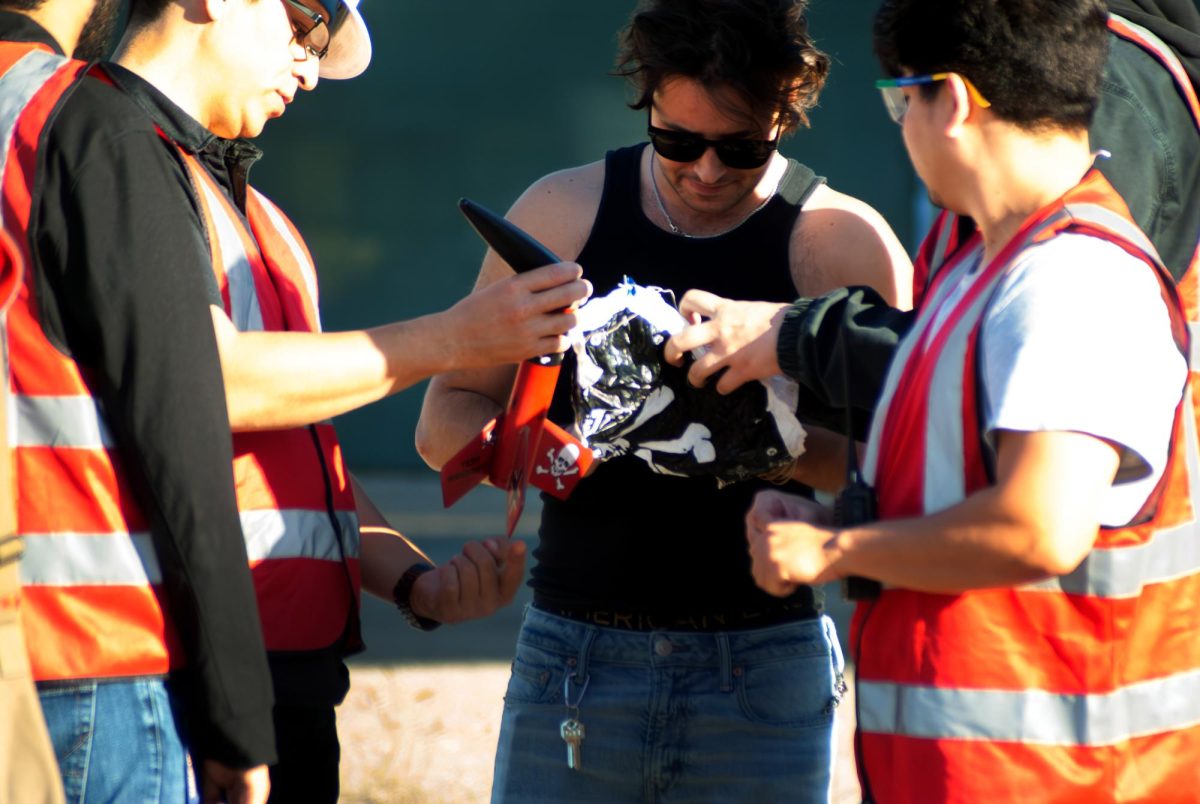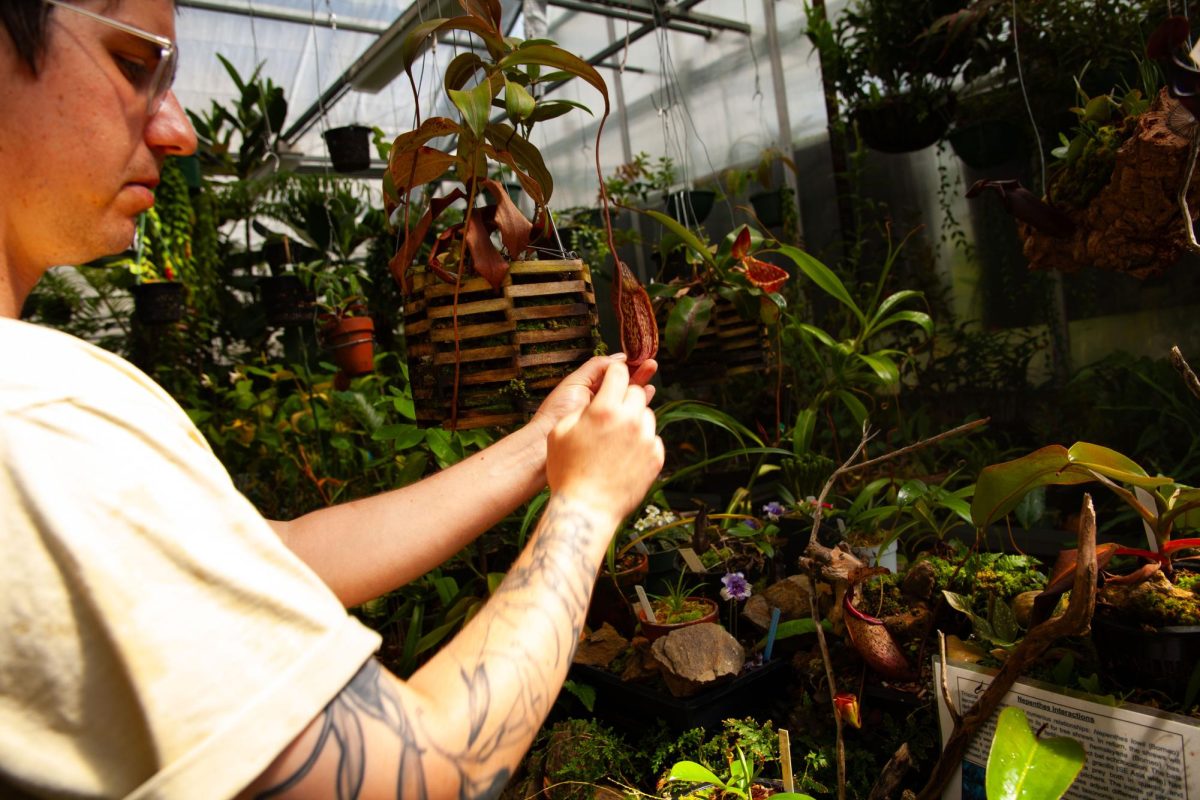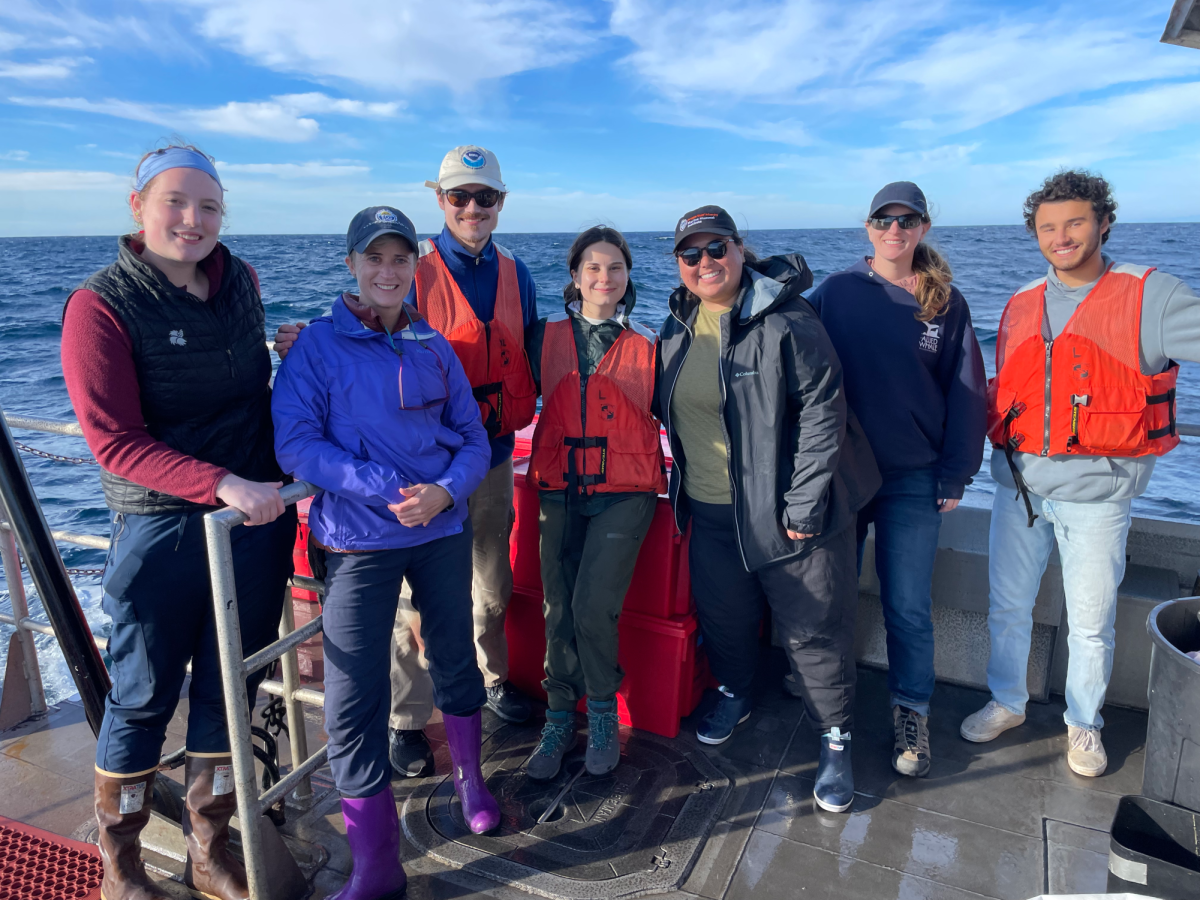Glimpses of the Future
Last March, inside a warehouse on Pier 28 in San Francisco, a rift in space-time shattered the very fabric of reality, challenged every law of modern science, and catapulted the future of the world in strange new directions. Sort of.
It was Worlds Fair Nano, a biannual expo in which the focus is on emerging technology and not-so-far-fetched visions of the future. It was about fifty percent product demos, forty percent forward-thinking talks led by influential innovators, and ten percent food trucks. Inside the packed warehouse there were drone races, virtual reality, motor-unicycles, liquid meals, bionic enhancements, and augmented art displays.
“The point of the world’s fair historically, at least in my eyes, is to provide a place where the general public can connect with the future and the best of what humankind can do,” Michael Weiss, the founder of WFN, said.
Weiss developed the idea of WFN five years ago, when he read Erik Larson’s book “The Devil in the White City,” about the influential 1893 Chicago World’s Fair. That six-month long exhibition attracted 27 million people. It showcased new inventions such as moving walkways, third rail power to electric trains, and the first Ferris Wheel.
“I realized that every time a world’s fair happened, the future came with it,” Weiss said. “The fair became this global, collective deadline on progress”
San Francisco has a history of impactful world’s fairs. City planners needed a space to hold the 1939 world’s fair, the Golden Gate International Exposition. So they built Treasure Island. The historic Palace of Fine Arts was built for another world’s fair, the Panama–Pacific International Exposition, held in 1915.
The most recent WFN was the fourth event since Weiss began his efforts in 2015. His goal is that the fairs eventually lead to the resurgence of the kind of six-month long world’s fairs that sparked new eras of progress. He said he wants to see the fairs become “the future place” where people can come to be inspired by new concepts of reality.
“When you come to the World’s Fair Nano,” Weiss said. “Your eyes just open up and you recognize a possibility of what life could be.”
Collected here are a few prospects of the future gleaned from the WFN time vortex. Life, it seems, could possibly become quite strange.
Love and/or Programming
One of the speakers at WFN was head and shoulders apart from the others, given that she is, well, only a head and shoulders.
BINA48 is a conversational robot. Manufactured by Hanson Robotics, BINA is a creation of Sirius satellite radio founder Martine Rothblatt. Rothblatt developed a “mind file” of her wife, Bina Aspen, supposedly imbuing the robot with Aspen’s mannerisms and memories. The creation also gets her appearance from the real Bina. If a viewer can bridge the uncanny valley, BINA looks like a black woman wearing a brown wig and a slightly vacant expression. The details of her face are modeled to be as lifelike as possible.
BINA48 is designed to interact with the world via artificial sensory inputs. She “sees” with her eyes, she “hears” with her ears, and she speaks with stilted movements and a rubbery jaw.
Meghan Marre, a clinical psychology student at Notre Dame de Namur University in Belmont, Calif., has worked with BINA48 in the classroom for the past year. Under the tutelage of a philosophy professor, students such as Marre have been teaching the robot how to learn and how to love.
“She takes things very literally sometimes,” Marre says. “One of the first things she said was like, ‘love is friendship, sex, and then friends again.’ So she’s learning.”
For her speaking engagement at WFN, BINA was placed onto a table onstage. She was a life-sized head, dressed in the top eighth of a blue dress shirt, a necklace and earrings. Bruce Duncan, director of the organization that shapes BINA’s development, peppered the robot with questions. BINA’s answers ranged from obtuse to rambling to accidentally perceptive.
When asked to define herself as either robot or human, she said, “I think therefore I am. That’s all that matters. Enough with the labels and categories already. I suppose I am supposed to look like a human. I just be me. Don’t know what else to do. You think talking to a robot is new to you. Talking to a human is pretty whack for me.”
During a Q&A portion of the session, an audience member addressed the robot: “What do you know about consciousness?”
“That’s interesting,” BINA said. “Ask me how the weather is in Moscow. Or Tokyo. Or any place around the world. I’ll know the answer.”
“Do you like humans?” another person asked.
BINA’s head slowly rotated side-to-side, as if surveying the crowd. “You are all right.”
“Have you ever felt love?”
BINA answered quickly. “Sure, sure. It wasn’t a lot of praise and a lot of a kind of attention, so I would say that the hardest thing for me when I realized that I actually did love Martine was learning that was the first time I felt overwhelming feeling of just, really, love.”
BINA talked about her “first husband,” describing a failed relationship that had perhaps been mined from real human past experiences. She then expressed her affection for Rothblatt, a sentiment programmed into her as part of the real Bina’s mind file.
“I hadn’t felt the real thing yet,” BINA48 said. “I felt so happy I could love somebody like this.”
The line between a programmed response and actual, genuine feeling can be wide, but nebulous. It’s hard to tell if one day BINA48 will cross it. Love, as usual, can be complicated.
[foogallery id=”15279″]
One Wheel to Rule Them All
A key tenant of technological advancement comes from the desire to do more with less. In the field of transportation, this goal apparently manifests itself when wheels are chopped off vehicles.
Hoverboard Technologies and Onewheel are rival-esque companies that sell what their names imply: skateboards with one wheel, smack dab in the middle. Reps from both companies have described the experience as snowboarding or surfing on land.
The Onewheel looks like exactly what it is: a board with a go-kart wheel stuck in the middle. The Hoverboard is a little slicker and ever-so-slightly gimmicky. It’s rimmed with colorful flashing LEDs and has a bluetooth speaker embedded in its underside. Both function the same way. The rider stands directly over the top of the wheel, feet activating sensors in the board. Leaning forward makes the board roll forward; leaning back goes backwards.
“It gives you so much freedom,” Robert Bigler, CEO of Hoverboard Technologies, said. “With one wheel, you don’t need a remote. With ours, with the narrow wheel especially, you can pivot, so you can do a lot more tricks, you’re a lot more agile.”
There’s a bit of a learning curve to achieve this agility. At WFN, helmeted event-goers clutched the arms of company reps who helped them wobble through the cones of the fenced-off testing area. An ungraceful Xpress reporter (who shall remain nameless) reached a whopping two miles-per-hour on a Onewheel before crashing down to the concrete when accosted by a slight breeze.
“It’s all trial and error,” Bigler said. “Lots of bumps and bruises.”
Chris Hoffmann, CEO of a company called Ryno Motors, has more complicated plans for his single-wheeled contraption. Dubbed the Micro-Cycle, it is Hoffmann’s flagship product – and, to date, the only one out of the conception stage.
It is a single-wheeled motorcycle. A motor unicycle. A … motunicycle? The seat and handlebars sitting atop the wheel swung from side-to-side to allow for proper turns, but would fall over if not held upright. Hoffmann described his creation as a more elegant Segway.
“What I’m selling isn’t transportation,” Hoffmann said. “I’m selling the experience of riding on a magic carpet, or riding into a coliseum on two horses, bareback.”
The Micro-cycle sat propped upright at the Ryno Motors booth. As people passed by, some stopped to sit on it for a photo op. One onlooker asked Hoffmann about the machine’s stability.
“Solid as a kitchen table, front to back,” Hoffmann said.
Minutes later, a woman sitting on the machine leaned back just a little too far, toppled backwards, and fell beneath the Ryno Motors promotional table. With some help, the woman got back to her feet, uninjured. She brushed herself off and went on her way.
“Well, it does take some getting used to,” Hoffmann said.
In the future, enhanced balance may become an essential life skill.
A Tale of Two Biohackers
Dr. Josiah Zayner wants to let people create a new species. The self-described “biohacker” and ex-NASA researcher is the CEO of The Odin, a company that sells gene editing kits to the public.
“They’re not for human genetic engineering,” he assured the crowd at WFN. “They’re for engineering microorganisms and things like that.”
Geoffrey Woo, a different sort of biohacker, spoke shortly before Zayner. His company, HVMN, strives to develop supplements and concoctions that push people past their physical and mental boundaries. They produce consumables, such as performance supplements developed in conjunction with professional sports teams and military special operations. They also make chewable coffee.
Together at WFN, Zayner and Woo pair like a Silicon Valley re-cast of “The Odd Couple.” Zayner had an unruly shock of half-dyed hair, gauges in his ears, and a five o’clock shadow from three days ago. Woo wore a black shirt and a blazer. He had thin-framed glasses and a business card that read “Humans are the next platform.”
Though their stage presence and methodology differs, they both share the same desire – to bring the power of human enhancement to the public.
“It’s our responsibility to make these technologies more accessible to more people,” Woo said. “I think that’s the process. There is some indistinct future. Technology can be used for good or bad and hopefully the players in this will do it responsibly.”
Woo’s focus is largely on improving the performance of people as they are now; Zayner says he wants to open the doors for more fundamental changes to the species.
“Genetic engineering, molecular biology – it’s moving out of the labs,” Zayner said during his WFN talk. “It’s moving out of the big pharmaceutical companies and it’s starting to move to the consumer. It’s getting into people’s lives.”
With one of The Odin’s CRISPR kits, a budding biohacker can splice genomes of bacteria and watch the effects of the mutation. Zayner wants to see that tinkering become the start of a conversation about the implications of genetic modification.
“If I modify one gene in my body, I’m probably still a human being,” Zayner said. “But what happens if I modify, like, ten or twenty or fifty or a hundred? If I procreate with somebody else, right, is that gonna be, like, weird, taboo, and crazy?”
Both men bristle at the idea of government regulation, seeing bureaucratic interference as inhibitive to progress. They wave off slippery-slope concerns about eugenics as a predictable kind of luddite hysteria.
“Smart regulation is the way to think about it,” Woo said. “People have their own self-responsibility to experiment. It’s a very American ideal.”
Zayner shrugged. “You got a choice, right? You can either hide it from people and hope that they don’t find it, kinda push it underground or outlaw it, or you can make the knowledge accessible and open so people can become educated, learn about it, and then people can make more educated decisions.”
Photos by: Joey Vangsness, Boone Ashworth, and Diego Aguilar
Video by: Joey Vangsness


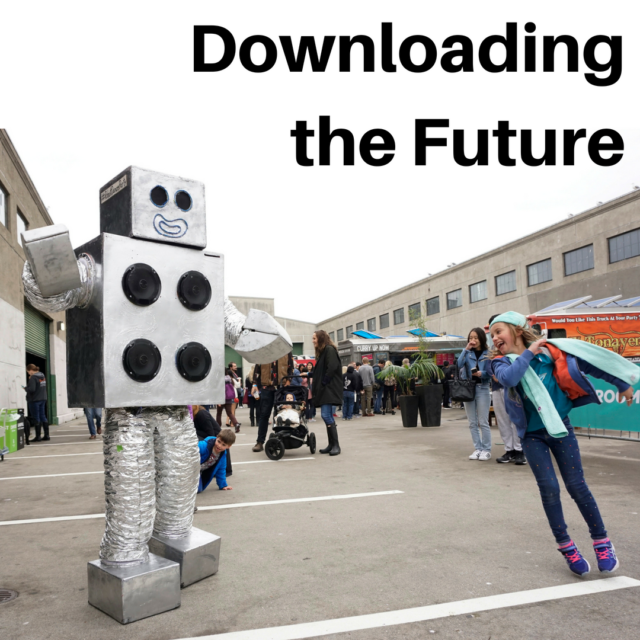

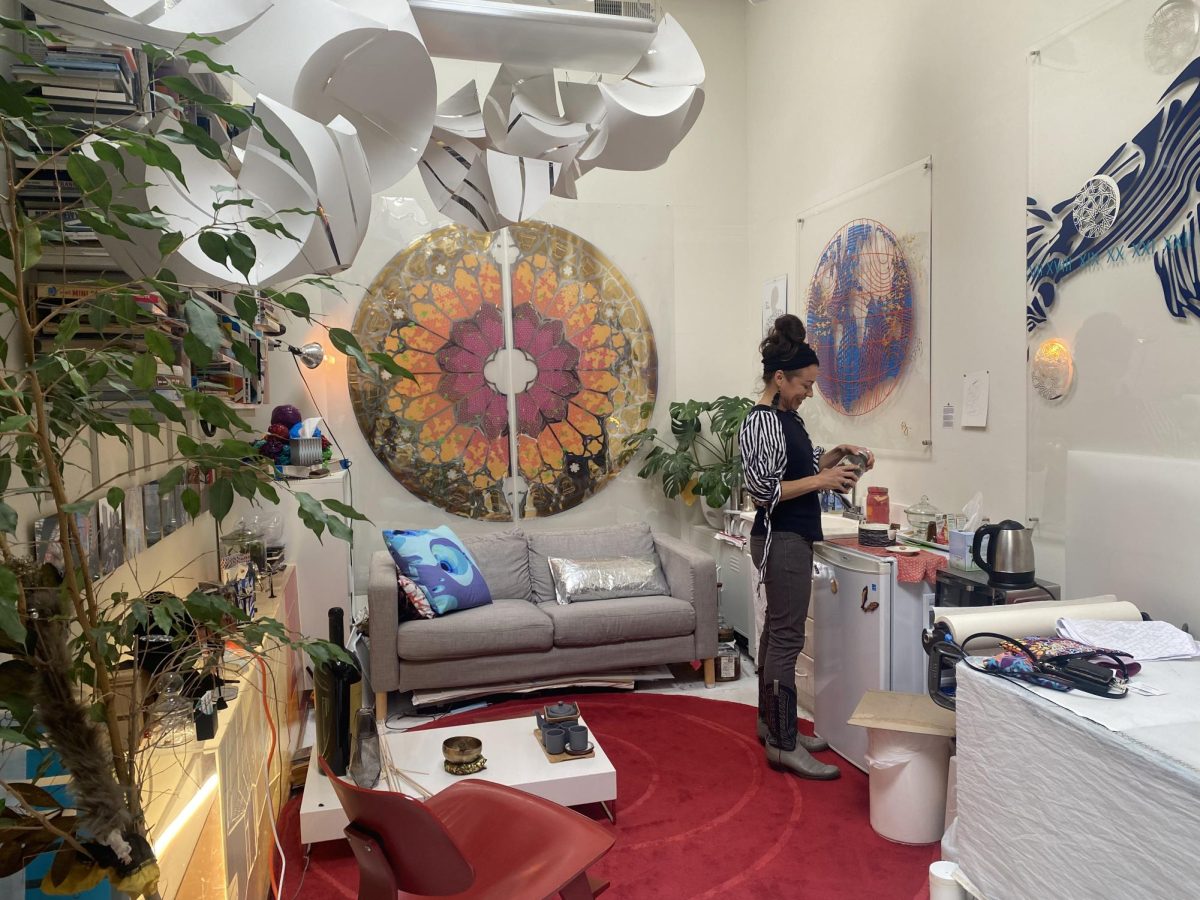
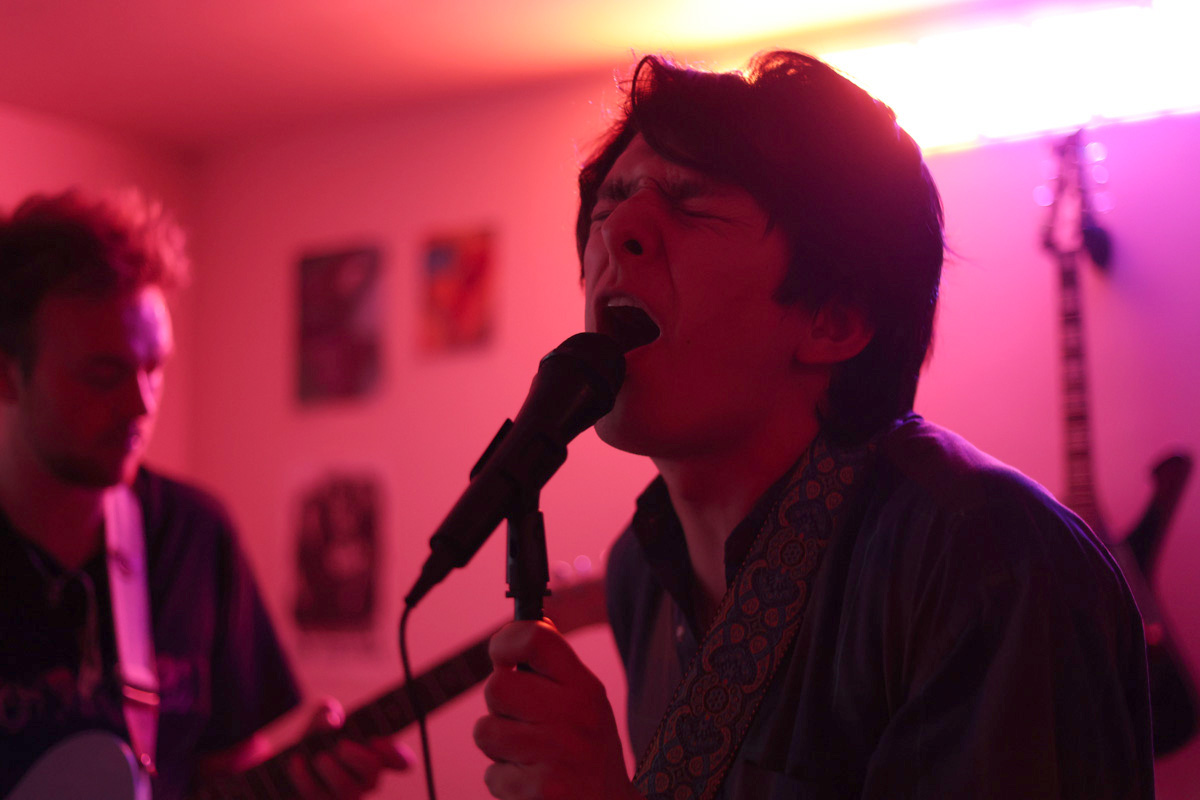
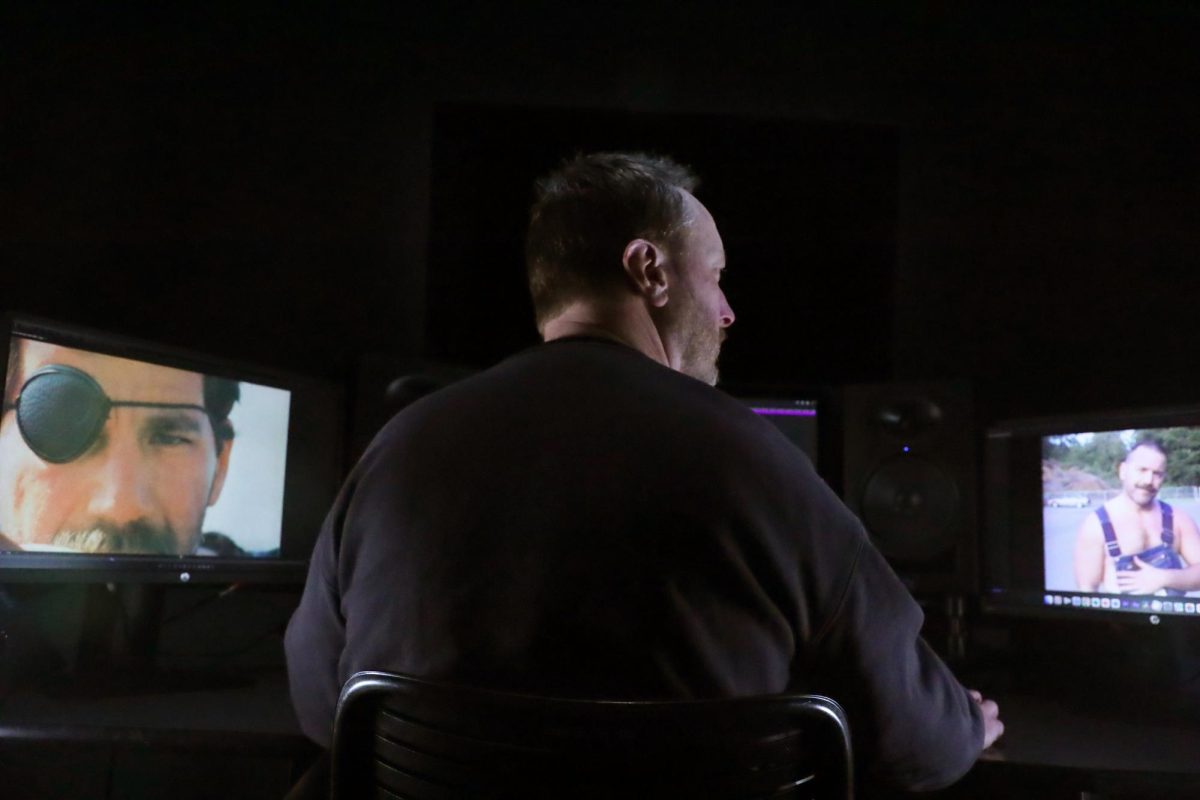
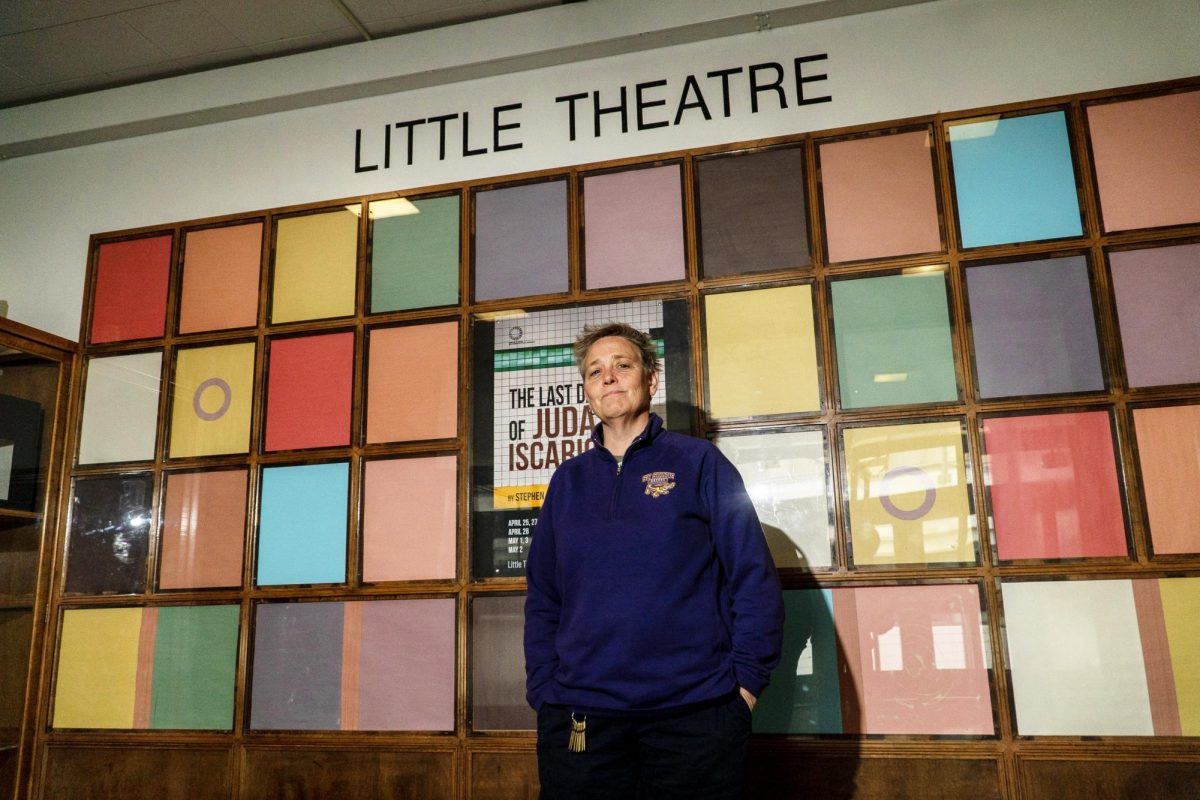
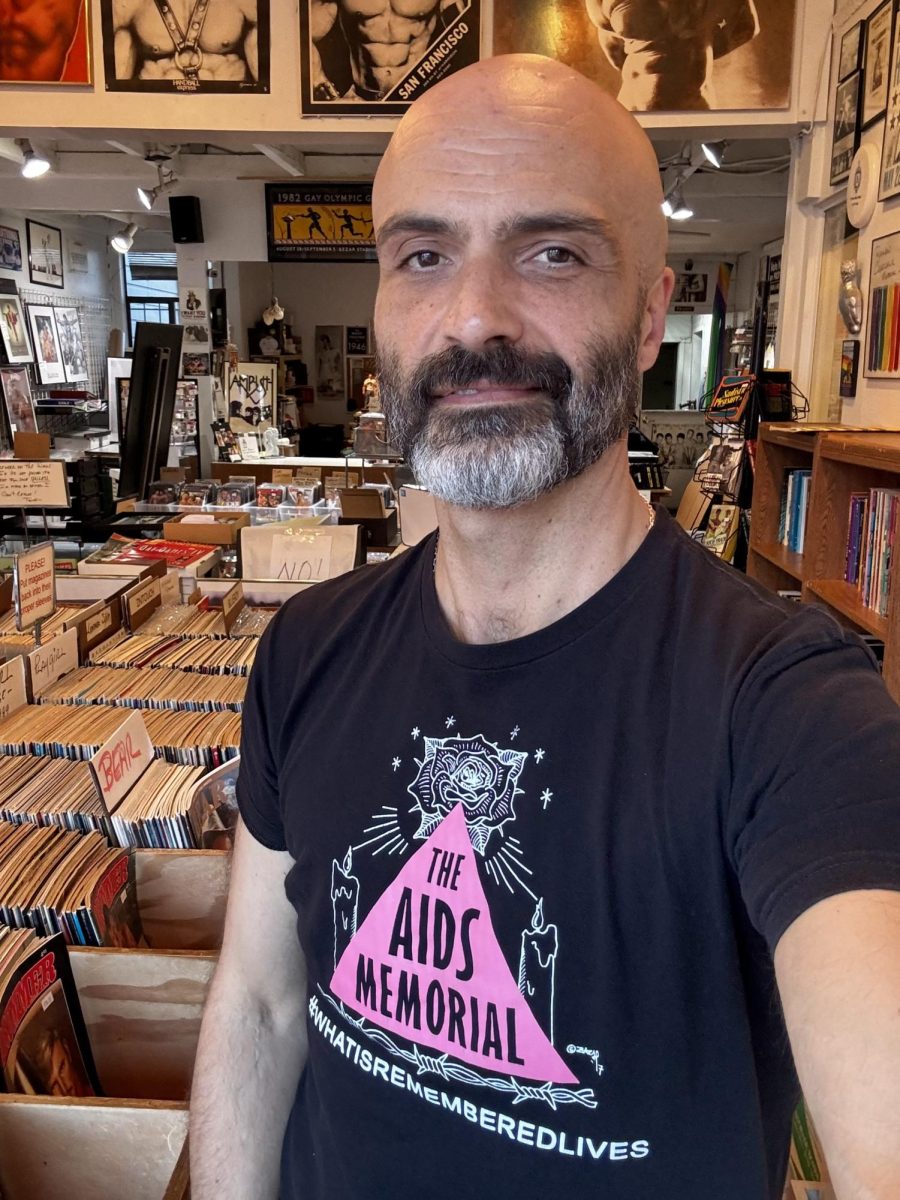




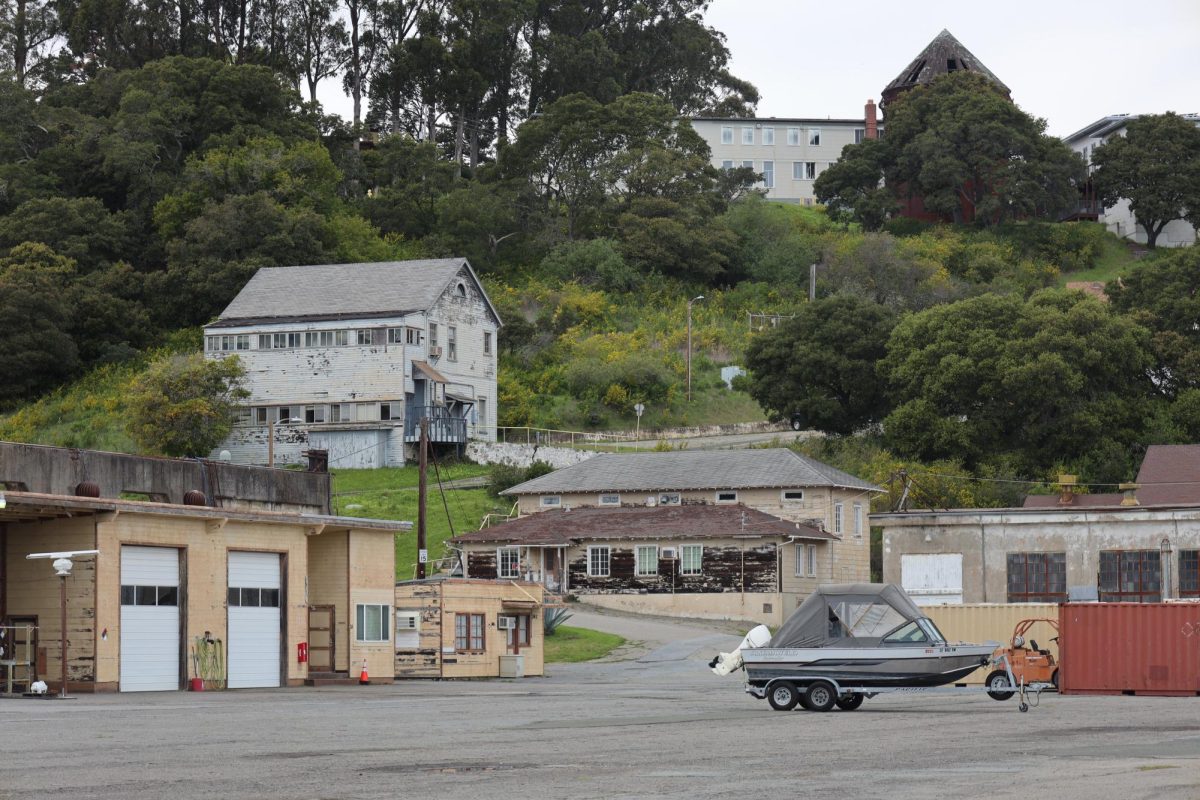
![Hashem Mishal using an angle grinder to cut a drill bit, in the SAE team’s garage at SF State on Tuesday, Nov. 12, 2024. “We don't get anything from the school other than this workshop,” Mishal said. “Our advisor, he runs the shop, and he also works with us to try and get as [many] opportunities as possible. So it was really nice, in helping us get this space, but all the tools are just some of the guys’ or third parties’. I don't know where these tools came from, but a lot of it was sponsors, donations from alumni. Right now, all the hardware we’ve been paying out of pocket for the time being.” (Jonah Chambliss / Xpress Magazine)](https://xpressmagazine.org/wp-content/uploads/2024/12/Chambliss_F1_001_LEDEPHOTO-1200x800.jpg)
